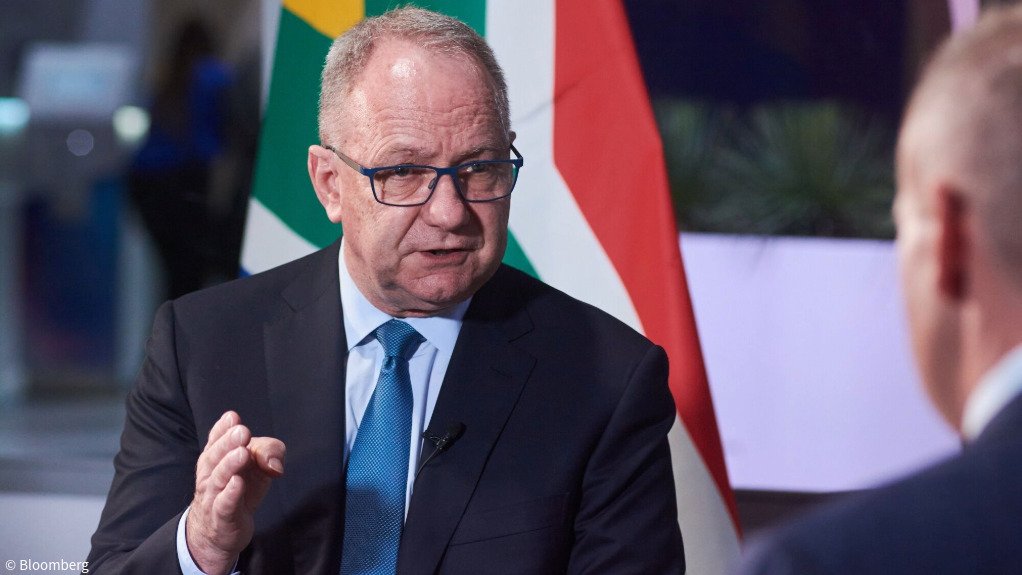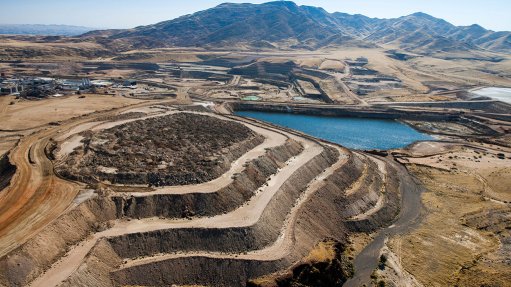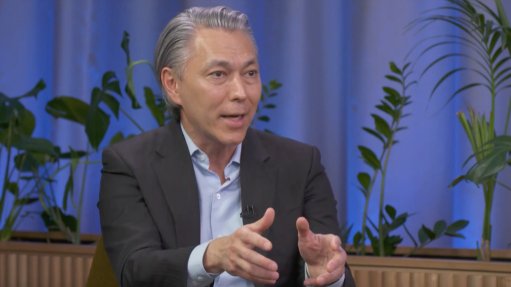Anglo’s stumbles have made it prey for mining’s biggest predator
When former boss Mark Cutifani left Anglo American in mid-April 2022, things had rarely looked better for the century-old miner. Metals prices soared as the world emerged from lockdowns, the company had recently posted its best-ever annual profit and the popular industry veteran was handing over to a trusted lieutenant. Anglo stock hit a record the same day.
Two years later, the company’s reputation is in tatters after a series of missteps sent its value plunging by half. And now industry heavyweight BHP Group is moving in.
BHP’s proposal to break up Anglo and cherry pick its best assets marks a humbling moment for the mining house founded by the storied Oppenheimer dynasty and owner of the iconic De Beers diamond business. While analysts broadly expect BHP will need to sweeten its offer — which valued Anglo at about $39-billion — the move is raising existential questions about the future of the company and whether it can continue in its current form.
For BHP, the crisis at Anglo has come at the perfect time. The smaller company, which owns a handful of the world’s most desirable copper mines, is suddenly vulnerable just as the industry leader is finally ready to flex its dealmaking muscles, after years of holding back.
And it’s not the only one — other big miners have also been shifting their focus back to acquisitive growth. Anglo has been underperforming at a time when money is pouring into the wider metals and commodities space, and rumors had swirled for months that the floundering miner was in play.
So when BHP Chairman Ken MacKenzie picked up the phone to his counterpart at Anglo earlier this month to make his proposal, it was a call that Anglo had been expecting for months in some form or other, according to people close to the company.
“Anglo was the most-liked stock a couple of years ago,” said Ben Davis, an analyst at Liberum Capital. “Repeated guidance disappointments and relative underperformance of its commodity basket has left it vulnerable to approaches.”
In many ways, the seeds of Anglo’s troubles months were sown well before Cutifani’s triumphant exit.
Just days after he left, the company announced a major setback at its mines, with production falling and costs rising. And what initially looked like a one-off for an otherwise reliable producer spiraled out from there. Problems multiplied across the portfolio, while Anglo revealed a cost blowout at the flagship fertilizer project the company had bought a few years earlier.
The disasters continued to pile up. Many of the issues were outside of Anglo’s control — the diamond market imploded, platinum prices collapsed and rail and port problems in South Africa have squeezed exports from the company’s cash-cow iron-ore business. Anglo is the only major miner with big platinum and diamond businesses and is particularly exposed to South Africa, which means it lagged rivals who weren’t dealing with the same hurdles.
As the pressures built, Anglo’s balance sheet was already stretched by its ambitious plan to build a fertilizer mine in the north of England. Unpopular with some investors, the project — long championed by new CEO Duncan Wanblad — kept getting more expensive and completion further away.
The real kicker came in December, during a routine update on Anglo’s business. Investors had been expecting cuts in South Africa, which were disappointing but not surprising.
But the market reacted in shock to a much bigger bombshell: Anglo’s South American copper mines — the company’s crown jewels — would need to slash production by roughly 20% to reduce costs. The shares cratered, plunging 19% in a single day.
The company has sought to turn the corner, telling investors it’s reviewing all its businesses. Anglo is open to selling its De Beers mining unit and looking for a partner for the big English fertilizer project.
But its weakness has left the company vulnerable. BHP has made a nonbinding proposal to buy Anglo in an all-share deal that valued the smaller company at about $39-billion based on Tuesday’s prices, BHP said in a statement on Thursday morning. Crucially, BHP wants Anglo to first split off the South African platinum and iron-ore businesses, spinning them out to existing shareholders, before a takeover could happen.
Anglo said late Wednesday it was assessing the proposal, confirming it had received an approach after Bloomberg first reported BHP’s interest.
The move is a convoluted way for BHP to get its hands on Anglo’s coveted copper mines, and the clearest evidence yet that the largest producers are ready to dive back into dealmaking. The companies spent much of the past decade under a type of self-enforced ban, after a series of disastrous deals led to billions in writedowns and a cost a series of CEOs their jobs.
Now, flush with cash and having rebuilt investor trust, the industry is turning back to growth — and going in search of copper. The deal proposed by BHP would create by far the world’s biggest copper producer, just as demand for the energy transition is predicted to soar.
BHP CEO Mike Henry, who had transformed the company by getting out of oil and gas, was given a mandate by his board to seek transformational deals, and was already running the numbers on rivals including Freeport-McMoRan and Glencore in early 2022, Bloomberg reported at the time.
One of the keys for BHP to pull off a deal for Anglo may lie in South Africa. The country’s state pension fund manager is Anglo’s biggest shareholder, and the group’s platinum and iron-ore companies are two of South Africa’s biggest listed stocks. (Anglo is the majority owner of both but they have small free floats on the Johannesburg Stock Exchange.)
In a statement on Thursday, the Public Investment Corp reiterated that the mining sector is of critical importance to the country and that any opportunities that arise need to take this factor into account.
Anglo has long links with the country: Founded in 1917 by entrepreneur Ernest Oppenheimer, Anglo American was built on the back of South Africa’s giant gold mines. Moving into diamonds with control of De Beers after Oppenheimer was elected to the board in 1926 — it owns 85% of the company after selling it and then buying it back — and then adding platinum and coal, Anglo grew rich and powerful through much of the 20th century.
As Apartheid sanctions bit, the company invested more in South Africa, becoming a sprawling conglomerate. Then, as international markets became accessible again, it rapidly grew overseas, building and buying coal mines in Australia, iron ore in Brazil and copper in Chile and Peru.
To be sure, this is not Anglo American’s first crisis. In 2015, the company almost collapsed amid huge debts and tumbling metal prices. Cutifani initially announced plans to sell half its mines, before backtracking as commodity prices recovered.
The difficulties at the time saw Indian billionaire Anil Agarwal grab a 20% stake in the company, which led to two years of deep speculation about his plans for the business. The tycoon ultimately walked away, unwinding his position.
While Anglo survived the attentions of Agarwal, the show of interest from the world’s biggest mining company may be more difficult to move past.
Article Enquiry
Email Article
Save Article
Feedback
To advertise email advertising@creamermedia.co.za or click here
Announcements
What's On
Subscribe to improve your user experience...
Option 1 (equivalent of R125 a month):
Receive a weekly copy of Creamer Media's Engineering News & Mining Weekly magazine
(print copy for those in South Africa and e-magazine for those outside of South Africa)
Receive daily email newsletters
Access to full search results
Access archive of magazine back copies
Access to Projects in Progress
Access to ONE Research Report of your choice in PDF format
Option 2 (equivalent of R375 a month):
All benefits from Option 1
PLUS
Access to Creamer Media's Research Channel Africa for ALL Research Reports, in PDF format, on various industrial and mining sectors
including Electricity; Water; Energy Transition; Hydrogen; Roads, Rail and Ports; Coal; Gold; Platinum; Battery Metals; etc.
Already a subscriber?
Forgotten your password?
Receive weekly copy of Creamer Media's Engineering News & Mining Weekly magazine (print copy for those in South Africa and e-magazine for those outside of South Africa)
➕
Recieve daily email newsletters
➕
Access to full search results
➕
Access archive of magazine back copies
➕
Access to Projects in Progress
➕
Access to ONE Research Report of your choice in PDF format
RESEARCH CHANNEL AFRICA
R4500 (equivalent of R375 a month)
SUBSCRIBEAll benefits from Option 1
➕
Access to Creamer Media's Research Channel Africa for ALL Research Reports on various industrial and mining sectors, in PDF format, including on:
Electricity
➕
Water
➕
Energy Transition
➕
Hydrogen
➕
Roads, Rail and Ports
➕
Coal
➕
Gold
➕
Platinum
➕
Battery Metals
➕
etc.
Receive all benefits from Option 1 or Option 2 delivered to numerous people at your company
➕
Multiple User names and Passwords for simultaneous log-ins
➕
Intranet integration access to all in your organisation



















